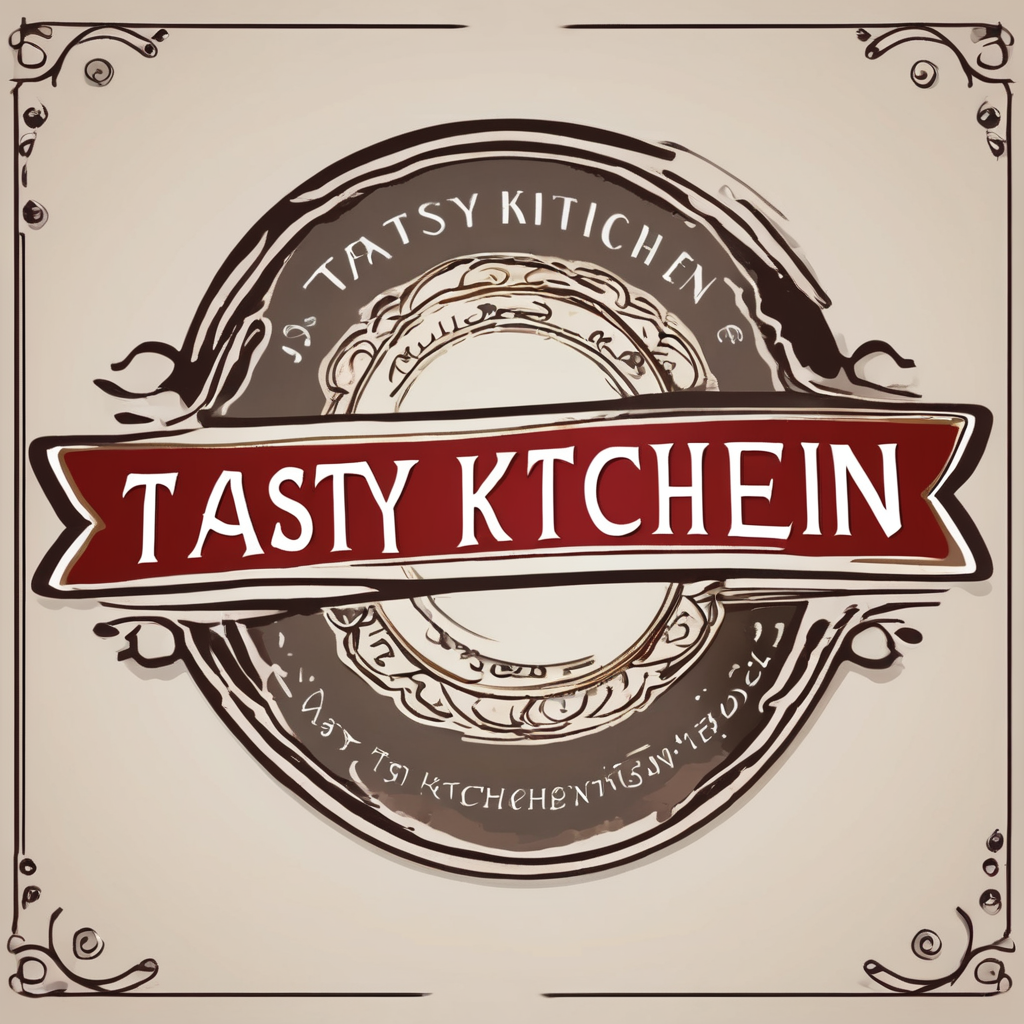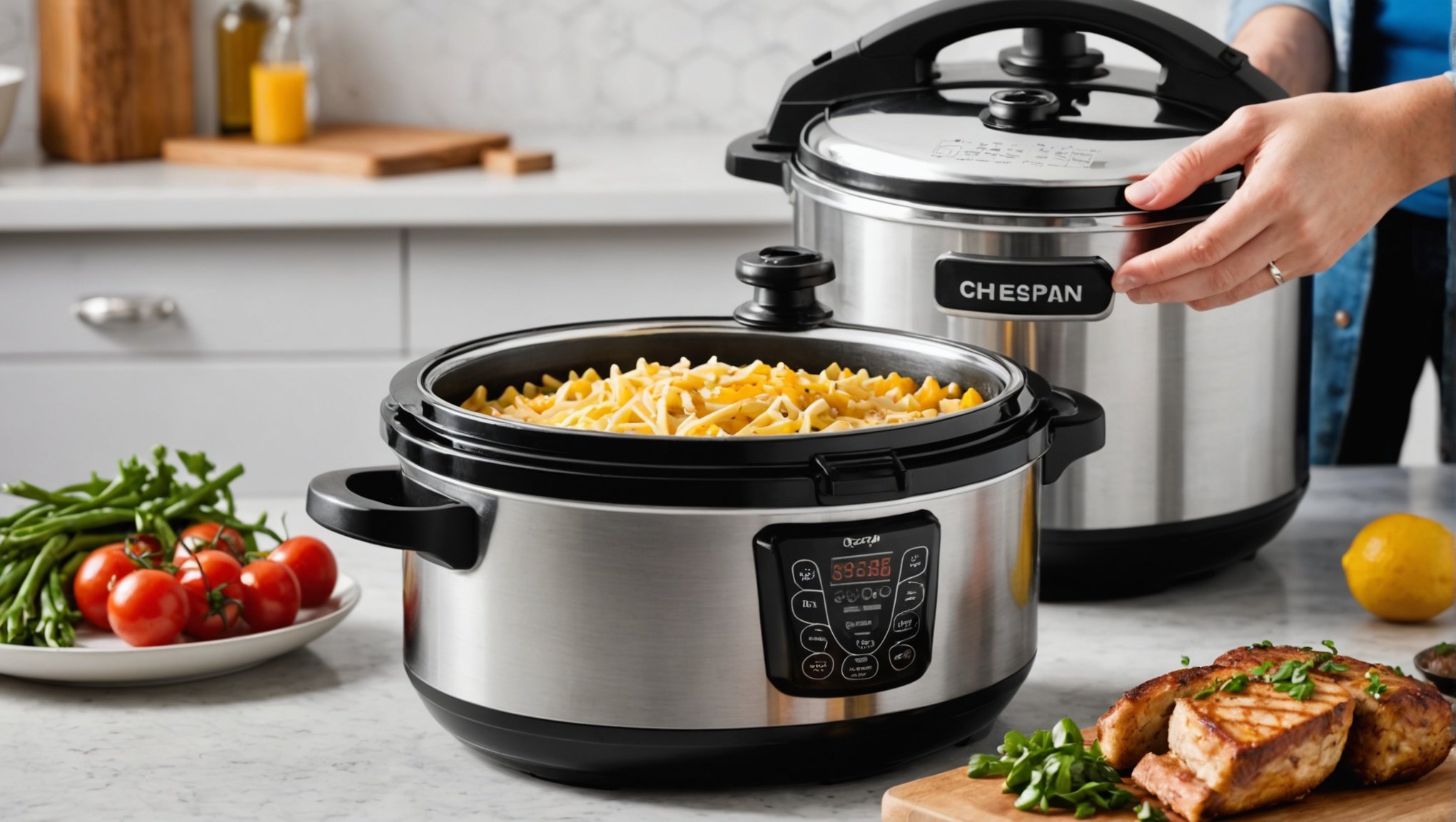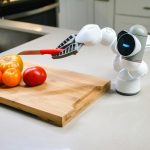Pressure cookers aren’t just kitchen gadgets; they’re time-saving superheroes. Imagine turning elaborate recipes that typically consume hours into delightful dishes ready in a fraction of the time. With a pressure cooker, rich flavors and tender textures become effortlessly attainable. No more long waits or tedious meal prep—this little appliance unlocks culinary creativity without sacrificing quality. Discover how to transform your cooking experience and relish in the luxury of more free time.
Overview of Pressure Cooking
Pressure cooking is a time-saving cooking method that harnesses steam pressure to cook food quickly. By sealing food and liquid in a pressure cooker, the pressure increases the boiling point of water, allowing food to cook at higher temperatures. This results in faster cooking times compared to traditional methods, making it ideal for busy individuals seeking efficiency in the kitchen.
Historically, pressure cookers have evolved significantly since their inception in the 17th century. Originally bulky and cumbersome, modern pressure cookers are now sleek, user-friendly, and equipped with advanced safety features. This evolution has made them a staple in many households, revolutionising how we approach cooking.
When comparing pressure cooking to traditional methods, such as boiling or steaming, the benefits are clear. Pressure cooking not only reduces cooking time but also helps retain more nutrients and flavours in the food. Traditional methods often require longer cooking times, which can lead to nutrient loss and diminished taste. Additionally, pressure cookers are versatile, accommodating a wide range of dishes from soups and stews to beans and grains, offering a comprehensive solution for diverse culinary needs.
This might interest you : Revolutionize your meal prep: discover how a kitchen chalkboard wall can enhance your dietary tracking experience
Embracing pressure cooking can transform your culinary experience, providing a practical and efficient way to prepare meals without compromising on quality.
Time-Saving Advantages of Pressure Cooking
Pressure cooking offers remarkable time efficiency, making it an invaluable tool for those with hectic schedules. By significantly reducing cooking times, it allows for swift meal preparation without sacrificing quality. On average, pressure cookers can cut cooking times by up to 70% compared to conventional methods. This means that dishes traditionally taking an hour can be ready in just 20 minutes.
Fast cooking is particularly advantageous for busy lifestyles. Imagine coming home after a long day and having a nutritious meal ready in a fraction of the time. The pressure cooker handles the hard work, freeing you to focus on other tasks or simply relax.
Consider the case of a classic beef stew. When prepared using traditional methods, it might take over two hours to become tender and flavourful. However, with a pressure cooker, the same dish can be completed in approximately 30 minutes. This dramatic reduction in cooking time not only benefits individuals but also families juggling multiple responsibilities.
In essence, the cooking time reduction offered by pressure cookers transforms meal preparation, enabling you to enjoy home-cooked meals without the lengthy wait.
Flavor Enhancement Through Pressure Cooking
Pressure cooking is celebrated for its ability to enhance flavors in various dishes. This cooking technique not only speeds up the cooking process but also intensifies the taste of the ingredients used. By cooking food in a sealed environment, pressure cookers trap steam and moisture, which helps in flavor retention. This results in dishes that are rich and aromatic, as the natural juices and essences are preserved and even amplified.
The science behind this enhancement lies in the way pressure cooking minimizes the oxidation of food. Less exposure to air means fewer nutrients and flavors are lost during cooking. Additionally, the elevated temperature and pressure help break down complex molecules, releasing more enhanced taste components into the dish.
Certain recipes particularly benefit from this method. For instance, curries and stews develop deeper and more complex flavors when pressure cooked. The process allows spices to infuse thoroughly, creating a harmonious blend of tastes. Similarly, beans and legumes cooked under pressure become tender while maintaining their distinct flavors. This makes pressure cooking a valuable technique for those seeking to maximize the flavor potential of their meals.
Versatility of Pressure Cookers
Pressure cookers are renowned for their multi-functionality, making them a versatile addition to any kitchen. They are not limited to just one type of cooking; instead, they accommodate a wide range of cooking styles. Whether you’re preparing a hearty stew, a creamy risotto, or even sautéing vegetables, a pressure cooker can handle it all. This adaptability allows home chefs to experiment with diverse recipes, catering to various culinary preferences.
One of the standout features of pressure cookers is their ability to adapt traditional recipes. Many classic dishes, such as stews and soups, can be effortlessly converted to pressure cooker recipes, saving time without sacrificing flavour. This is particularly beneficial for recipes that typically require long cooking times, as the pressure cooker significantly reduces the duration while enhancing the dish’s taste.
Moreover, pressure cookers can be used for slow cooking, steaming, and even baking, offering a comprehensive cooking solution in one appliance. This diverse recipe capability means that you can explore different cuisines and cooking techniques, all with the convenience of a single device. Embracing the versatility of pressure cookers can truly elevate your cooking experience, making meal preparation both efficient and enjoyable.
Top Elaborate Recipes for Pressure Cookers
Pressure cookers open up a world of recipe ideas, transforming even the most elaborate dishes into manageable endeavours. Whether you’re a beginner or a seasoned chef, exploring pressure cooker recipes can elevate your culinary repertoire.
Selection of Elaborate Recipes
- Coq au Vin: This classic French dish, traditionally requiring hours of slow cooking, can be prepared in a fraction of the time. The pressure cooker enhances the rich flavours of red wine and tender chicken, creating a gourmet experience.
- Risotto Milanese: Achieve creamy perfection with minimal stirring. The pressure cooker ensures even cooking, allowing the saffron-infused rice to absorb flavours fully.
- Beef Bourguignon: Known for its depth of flavour, this dish benefits from the pressure cooker’s ability to tenderize beef while maintaining a robust taste profile.
Step-by-Step Guides
For each recipe, begin with sautéing aromatics directly in the cooker. Add liquids and main ingredients, then seal and set to high pressure. Follow specific timing for each dish to achieve optimal results.
Customization Tips
- Adjust seasoning after pressure release for precise flavour control.
- Experiment with different broths or wines to tailor the taste.
- Incorporate seasonal vegetables to enhance the dish’s complexity.
Explore these cookbooks for more inspiration, and let your pressure cooker redefine your culinary adventures.
Essential Tips for Using a Pressure Cooker
When it comes to mastering the art of pressure cooking, understanding key pressure cooker techniques is crucial. First and foremost, safety should be your priority. Always ensure the pressure release valve is clean and functioning properly to prevent any mishaps. It’s also important to avoid overfilling the cooker; stick to the recommended limits, usually two-thirds full for solids and half for liquids.
To achieve perfect results every time, consider these cooking tips: Begin by browning meats and sautéing vegetables directly in the cooker to enhance flavours. Use the correct amount of liquid—too little can cause burning, while too much may dilute flavours. It’s also wise to adjust cooking times based on the size and type of ingredients.
Avoid common mistakes by not opening the cooker prematurely, as this can lead to undercooked food. Allow for natural pressure release for dishes requiring tenderness, like meats. Lastly, ensure all seals and gaskets are intact and replace them if worn out to maintain the cooker’s efficiency.
By adhering to these safety tips and techniques, you can confidently explore a range of recipes, making the most of your pressure cooker.
Comparing Pressure Cooking to Other Cooking Methods
In the realm of culinary techniques, the cooking method comparison between pressure cooking and slow cooking reveals distinct advantages and disadvantages. Pressure cooking is renowned for its speed and nutrient retention, making it an efficient choice for those with time constraints. Conversely, slow cooking excels in delivering tender, flavourful results over extended periods, ideal for recipes that benefit from gradual heat exposure.
Pressure Cooking vs. Slow Cooking
Pressure Cooking:
- Efficiency: Cuts cooking time by up to 70%, conserving energy and reducing utility costs.
- Nutrient Retention: Preserves more vitamins and minerals due to shorter cooking durations.
Slow Cooking:
- Flavour Development: Allows flavours to meld over time, enhancing taste.
- Ease of Use: Set-and-forget convenience, particularly for busy individuals.
Cost and Energy Efficiency
Pressure cookers are generally more energy-efficient, as they require less time and energy to cook meals. This can lead to lower electricity or gas bills. Slow cookers, while using low energy, need longer cooking times, which can offset their initial energy savings.
User Testimonials
Many users appreciate the efficiency of pressure cooking, citing time savings and enhanced flavours. Others prefer the leisurely pace of slow cooking, valuing the depth of flavour and texture it imparts.
Maintenance and Care for Pressure Cookers
Proper Pressure Cooker Maintenance is essential to ensure your appliance remains efficient and safe over time. Regular maintenance not only enhances performance but also extends the longevity of your pressure cooker.
Best Practices for Maintenance
- Regular Cleaning: After each use, clean the cooker thoroughly. Wash the pot, lid, and gasket with warm soapy water. Avoid using abrasive materials that could damage the surfaces.
- Inspect Seals and Gaskets: Regularly check the gasket for wear and tear. A damaged gasket can lead to pressure loss, affecting cooking efficiency. Replace it promptly if any cracks or deformities are found.
- Valve Care: Ensure the pressure release valve is free of debris. A clogged valve can prevent proper pressure release, posing safety risks.
Prolonging the Life of Your Cooker
- Avoid Overfilling: Adhere to recommended fill levels to prevent pressure buildup issues.
- Handle with Care: Protect the cooker from knocks and drops that could damage its structure.
- Store Properly: Keep the pressure cooker dry and store it with the lid upside down to maintain the gasket’s shape.
By following these cleaning tips and maintenance practices, you can enjoy the benefits of your pressure cooker for years to come.
Addressing Common Myths about Pressure Cooking
Pressure cooking has been surrounded by numerous myths vs. facts, often leading to hesitation in adoption. One prevalent pressure cooking misconception is that it’s inherently dangerous. However, modern pressure cookers come equipped with multiple safety mechanisms, such as locking lids and pressure release valves, ensuring secure operation.
Another myth is that pressure cooking diminishes food quality. In reality, this method enhances flavor and retains more nutrients compared to traditional cooking, as food is cooked faster and with less water. This misconception often stems from confusion with outdated models, which lacked the advanced features of today’s appliances.
A common operational myth is that pressure cookers are complicated to use. Modern designs are user-friendly, with clear instructions and intuitive controls, making them accessible even for beginners. Furthermore, the idea that pressure cooking is only suitable for specific recipes is misleading. As highlighted earlier, pressure cookers are versatile, accommodating a wide range of dishes.
Facts and statistics further debunk these myths. Studies show that pressure cooking can reduce cooking time by up to 70%, conserving energy and preserving nutrients. Embracing the facts over misconceptions can lead to a more efficient and enjoyable cooking experience.
Conclusion and Future of Pressure Cooking
As technology continues to advance, cooking innovations are reshaping the landscape of kitchen appliances, with pressure cookers at the forefront. Emerging trends in pressure cooking technology are making these devices smarter and more efficient. Features like digital controls, pre-set cooking programs, and integration with smart home systems are becoming increasingly common.
Looking ahead, the future trends in pressure cooking suggest even greater convenience and versatility. We can anticipate the development of multi-functional appliances that combine pressure cooking with other methods, such as air frying or sous-vide, offering a comprehensive solution for modern kitchens. Additionally, the use of sustainable materials and energy-efficient designs will likely become standard, aligning with global trends towards eco-friendly living.
For those eager to explore the possibilities of pressure cooking, now is the perfect time to dive in. With ongoing advancements, these appliances are set to become even more integral to everyday cooking. Embrace the potential of pressure cooking to transform your meal preparation, making it quicker, more nutritious, and flavourful. As kitchen appliances evolve, staying informed and open to future trends will ensure you make the most of these culinary innovations.






